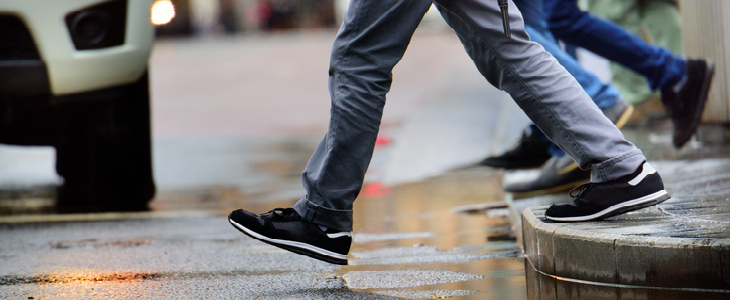Have you or someone you know been struck by a car as a pedestrian? If so, there are various factors to consider if deciding to bring a lawsuit:
- Establishing Duty of Care: To prove negligence, you first need to demonstrate that the defendant (the driver) owed a duty of care to the plaintiff (the pedestrian). For drivers, this means following traffic laws, being vigilant, and driving safely given the current conditions. For pedestrians, this means using crosswalks, obeying traffic signals, and not entering the road unpredictably or in an unsafe manner.
- Breach of Duty: Once you have established a duty of care, you must demonstrate that the defendant breached that duty. This can be shown through various means:
- Evidence of Violation of Laws: For instance, if the driver was texting, speeding, ran a red light, or was under the influence of alcohol or drugs, this can be used as evidence of negligence.
- Eyewitness Testimony: Witnesses can provide statements about what they saw or heard before, during, or after the accident.
- Surveillance Footage: Videos from traffic cameras, nearby businesses, or even dashcams can provide a clear picture of the events leading up to the accident.
- Causation: You must prove that the defendant’s breach of duty directly caused the accident and the pedestrian’s injuries. This can be challenging, especially if there are multiple potential causes or if the defendant claims the pedestrian was partly or entirely at fault.
- Potential Damages: If negligence is proven, the injured party may be entitled to recover damages. This can include:
- Medical expenses.
- Lost wages.
- Pain and suffering.
- Loss of consortium or companionship (for loved ones).
- Property damage.
- Comparative Negligence Law: Texas follows a modified comparative fault rule, known as the “51% rule.” Under this rule, an injured party cannot recover damages if they are found to be more than 50% at fault for the injury. If the injured party is 50% or less at fault, they can recover damages, but the amount will be reduced by their percentage of fault. As a result, if the pedestrian was also negligent (for example, if they were crossing outside of a crosswalk or against a signal), this can impact the outcome of the case.
- Gather and Preserve Evidence: This can include:
- Police Reports: Always report the accident to the police. They will create a report that can be crucial evidence in your case.
- Medical Records: Seek medical attention immediately after the accident, even if you feel fine. Some injuries might not manifest symptoms immediately.
- Photos and Videos: Photograph the accident scene, including the position of the vehicle, skid marks, your injuries, and any other relevant details.
- Expert Witnesses: In some cases, accident reconstruction experts can help establish how the accident occurred.
- Statute of Limitations: Texas generally has a two-year statute of limitations for personal injury claims, including pedestrian-car accidents. This means that the injured party has two years from the date of the accident to file a lawsuit.
Takeaway
Personal injury cases, especially those involving pedestrians, can be complicated. An experienced pedestrian accident attorney can guide you through the process, help gather and preserve evidence, negotiate with insurance companies, and represent you in court if necessary. Our legal team has the resources to thoroughly investigate your claim and develop an effective strategy on your behalf. Contact Ceja Law Firm, PLLC as soon as possible to schedule your free initial consultation to discuss your case.
